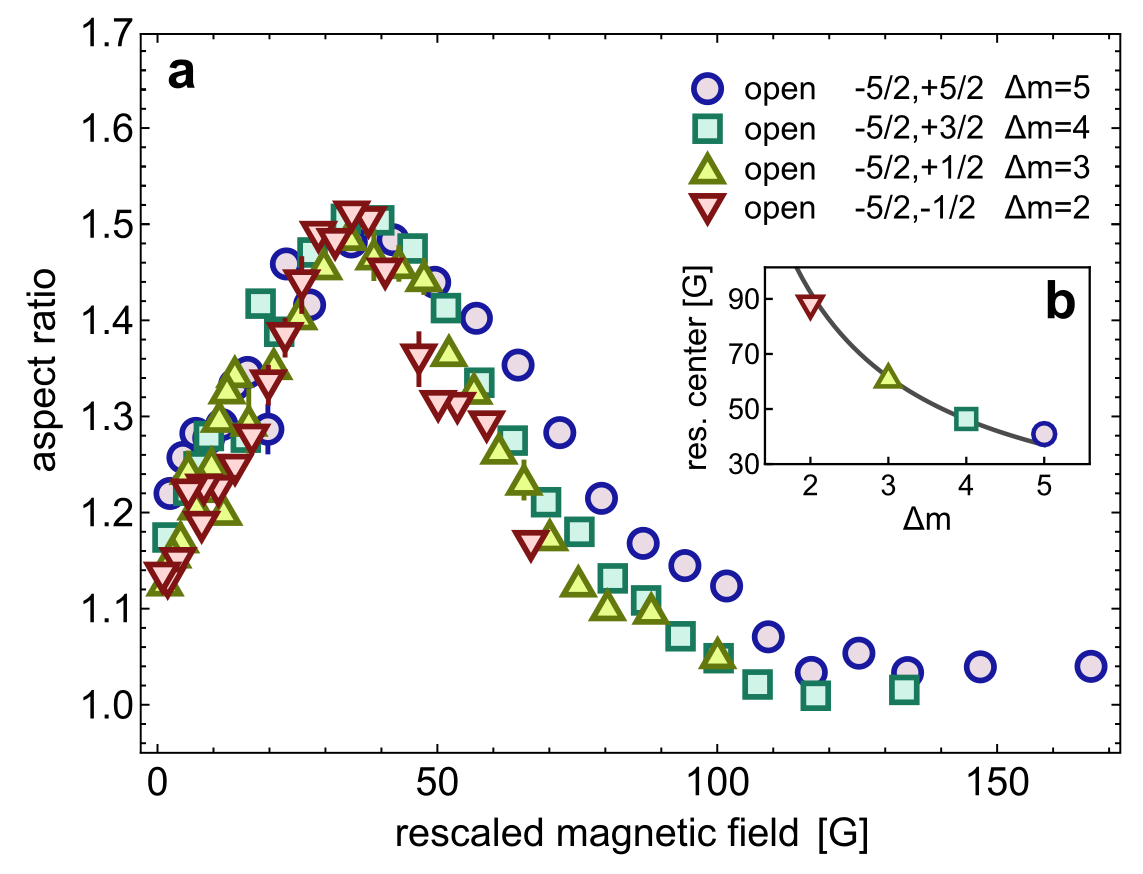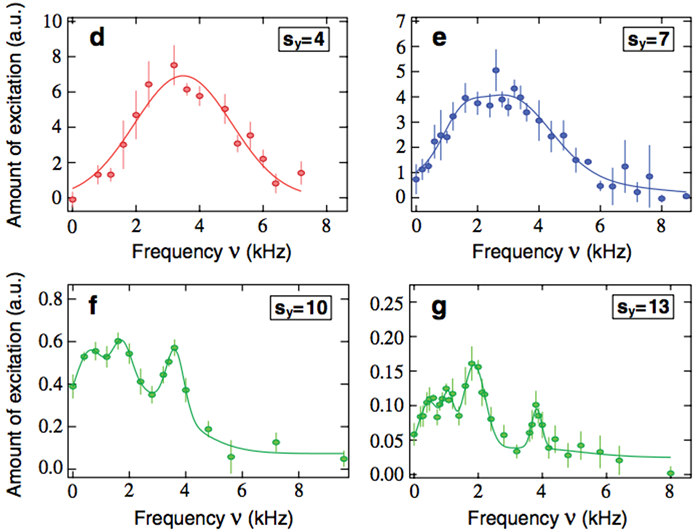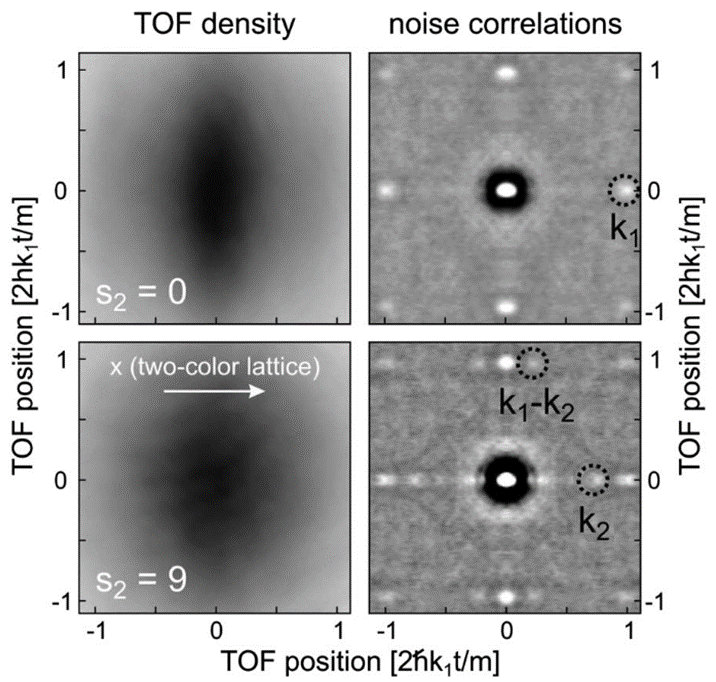 |
We report on the experimental observation of a strongly interacting gas of ultracold two-electron fermions with an orbital degree of freedom and magnetically tunable interactions. This realization has been enabled by the demonstration of a novel kind of Feshbach resonance occurring in the scattering of two 173Yb atoms in different nuclear and electronic states. The strongly interacting regime at resonance is evidenced by the observation of anisotropic hydrodynamic expansion of the two-orbital Fermi gas. These results pave the way towards the realization of new quantum states of matter with strongly correlated fermions with an orbital degree of freedom. G. Pagano et al., See also the Physics Viewpoint by S. Cornish: S. Cornish |
LAST NEWS
|
|
In ultracold atoms settings, inelastic light scattering is a preeminent technique to reveal static and dynamic properties at nonzero momentum. In this work, we investigate an array of one-dimensional trapped Bose gases, by measuring both the energy and the momentum imparted to the system via light scattering experiments. The measurements are performed in the weak perturbation regime, where these two quantities — the energy and momentum transferred — are expected to be related to the dynamic structure factor of the system. We discuss this relation, with special attention to the role of in-trap dynamics on the transferred momentum. N. Fabbri et al., |
 |
Entanglement is a fundamental resource for quantum information processing, occurring naturally in many-body systems at low temperatures. The presence of entanglement and, in particular, its scaling with the size of system partitions underlies the complexity of quantum many-body states. The quantitative estimation of entanglement in many-body systems represents a major challenge, as it requires either full-state tomography, scaling exponentially in the system size, or the assumption of unverified system characteristics such as its Hamiltonian or temperature. Here we adopt recently developed approaches for the determination of rigorous lower entanglement bounds from readily accessible measurements and apply them in an experiment of ultracold interacting bosons in optical lattices of 105 sites. We then study the behaviour of spatial entanglement between the sites when crossing the superfluid-Mott insulator transition and when varying temperature. This constitutes the first rigorous experimental large-scale entanglement quantification in a scalable quantum simulator. M. Cramer et al., |
 |
We report the Bragg spectroscopy of interacting one-dimensional Bose gases loaded in an optical lattice across the superfluid to the Mott-insulator phase transition. Elementary excitations are created with a nonzero momentum and the response of the correlated 1D gases is in the linear regime. The complexity of the strongly correlated quantum phases is directly displayed in the spectra which exhibit novel features. This work paves the way for a precise characterization of the state of correlated gases in optical lattices. D. Clément et al., See also the Physics Viewpoint by D. Jaksch: D. Jaksch |
 |
We use a two-color lattice to break the homogeneous site occupation of an atomic Mott insulator of bosonic 87Rb. We detect the disruption of the ordered Mott domains via noise correlation analysis of the atomic density distribution after time of flight. The appearance of additional correlation peaks evidences the redistribution of the atoms into a strongly inhomogeneous insulating state, in quantitative agreement with the predictions. V. Guarrera et al. |
